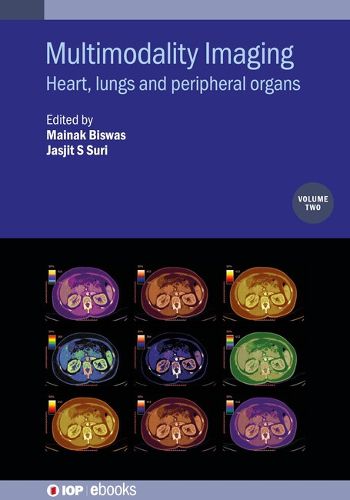Readings Newsletter
Become a Readings Member to make your shopping experience even easier.
Sign in or sign up for free!
You’re not far away from qualifying for FREE standard shipping within Australia
You’ve qualified for FREE standard shipping within Australia
The cart is loading…






This title is printed to order. This book may have been self-published. If so, we cannot guarantee the quality of the content. In the main most books will have gone through the editing process however some may not. We therefore suggest that you be aware of this before ordering this book. If in doubt check either the author or publisher’s details as we are unable to accept any returns unless they are faulty. Please contact us if you have any questions.
This volume discusses various diseases related to lung, heart, peripheral arterial imaging, and miscellaneous topics like gene expression characterization and classification. Further, the Vol. 2 discusses imaging applications, their complexities and the DL-models employed to resolve them in detail. The DL-based applications are categorized into two types: segmentation and characterization.
The segmentation is chiefly involved in dissecting region-of-interest (ROI) of the infected part. In the characterization part, the dissected ROI or the overall image is graded as per the risk factor is involved. DL has a remarkable success in segmenting carotid plaque area from ultrasound common carotid artery images. Similarly in case of brain imaging, DL-based applications for brain cancer are divided into segmentation and characterization. In the segmentation part, the brain tumour is separated from the healthy tissue. In the characterization part, the tumour cells are graded as per their risk. Overall, DL is human brain comparable intelligence system which can strengthen effective medical treatment in a faster way. It is for sure, that DL-based technologies can enable doctors to quickly diagnose the patients, provide an effective plan for treatment and help in saving lives.
Key features:
Discusses various diseases related to lung, heart, peripheral arterial imaging, and miscellaneous topics like gene expression characterization and classification
Discusses imaging applications, their complexities and the DL-models employed to resolve them in detail
Takes the most basic workable model and then builds the entire architecture in a bottom-up approach
Provides state-of-the-art contributions while addressing doubts in multimodal research Details the future of deep leanring and big data in medical imaging
$9.00 standard shipping within Australia
FREE standard shipping within Australia for orders over $100.00
Express & International shipping calculated at checkout
This title is printed to order. This book may have been self-published. If so, we cannot guarantee the quality of the content. In the main most books will have gone through the editing process however some may not. We therefore suggest that you be aware of this before ordering this book. If in doubt check either the author or publisher’s details as we are unable to accept any returns unless they are faulty. Please contact us if you have any questions.
This volume discusses various diseases related to lung, heart, peripheral arterial imaging, and miscellaneous topics like gene expression characterization and classification. Further, the Vol. 2 discusses imaging applications, their complexities and the DL-models employed to resolve them in detail. The DL-based applications are categorized into two types: segmentation and characterization.
The segmentation is chiefly involved in dissecting region-of-interest (ROI) of the infected part. In the characterization part, the dissected ROI or the overall image is graded as per the risk factor is involved. DL has a remarkable success in segmenting carotid plaque area from ultrasound common carotid artery images. Similarly in case of brain imaging, DL-based applications for brain cancer are divided into segmentation and characterization. In the segmentation part, the brain tumour is separated from the healthy tissue. In the characterization part, the tumour cells are graded as per their risk. Overall, DL is human brain comparable intelligence system which can strengthen effective medical treatment in a faster way. It is for sure, that DL-based technologies can enable doctors to quickly diagnose the patients, provide an effective plan for treatment and help in saving lives.
Key features:
Discusses various diseases related to lung, heart, peripheral arterial imaging, and miscellaneous topics like gene expression characterization and classification
Discusses imaging applications, their complexities and the DL-models employed to resolve them in detail
Takes the most basic workable model and then builds the entire architecture in a bottom-up approach
Provides state-of-the-art contributions while addressing doubts in multimodal research Details the future of deep leanring and big data in medical imaging